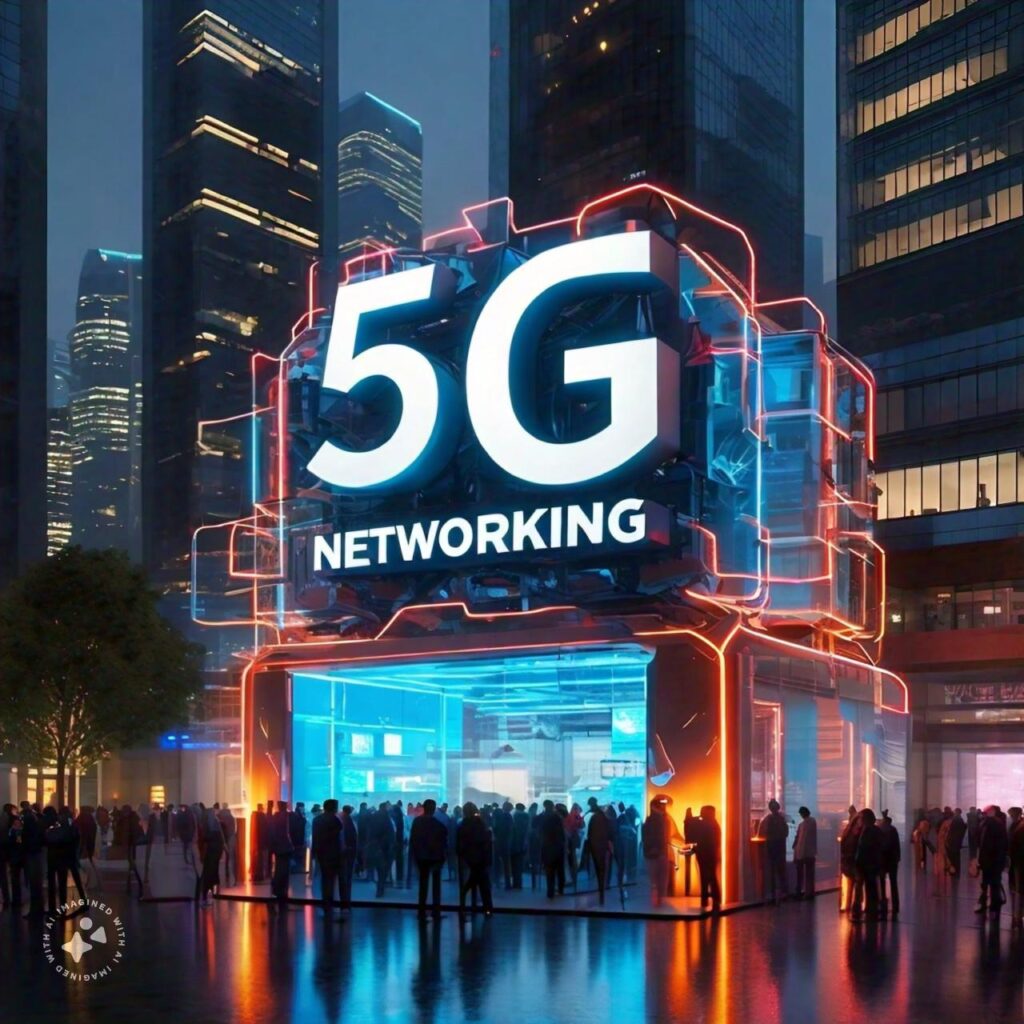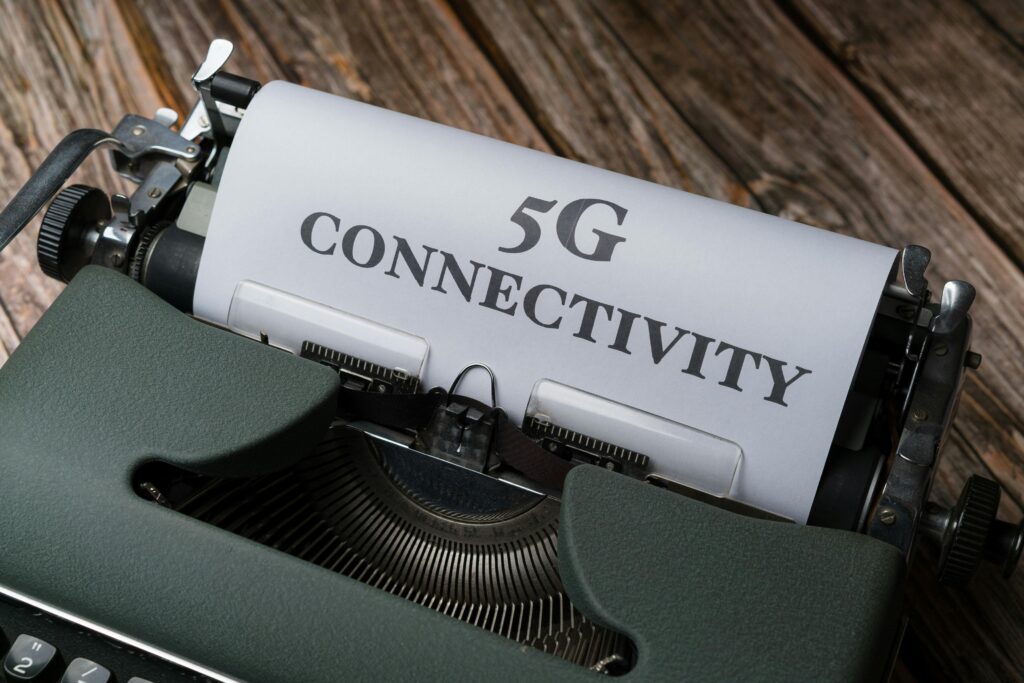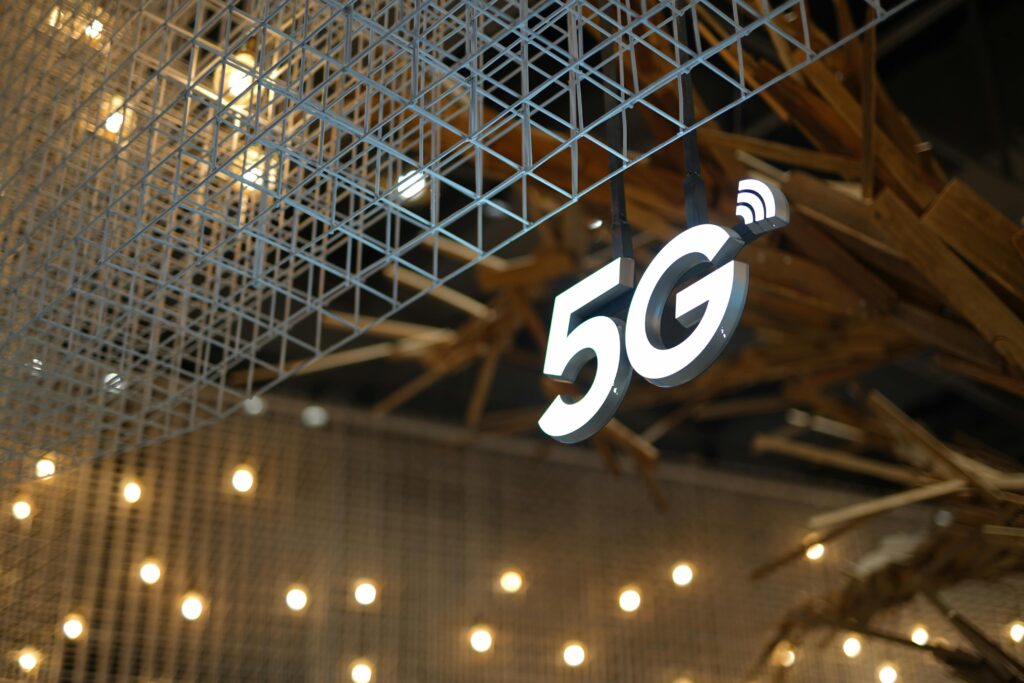
In the last few decades, we have reached the ultimate level of efficiency, but it seems like human thirst for fast communication still needs more. So, here is 5g with faster communication and a lower latency rate.
Industry leaders, creators, and users are all excited about the fifth generation of wireless technology, promising unmatched speed, reliability, and connectivity.
As we explore the details of 5G systems, we will also uncover opportunities that could significantly transform communication and bring an era of endless possibilities.
Are you ready to dive in? Let’s get started!
5G: What is it?

The latest version of wireless network technology, 5G, is designed to provide faster connections, lower latency, and higher data speeds than previous generations. The “G” in 5G stands for “generation,” marking a new era in wireless communication.
To deliver more reliable and faster connections than 4G, 5G uses sub-6 GHz and millimeter wave (mmWave) frequencies, operating within a dedicated spectrum for improved speed and reliability.
To completely understand 5G networks, it’s essential to grasp the core ideas behind them. 5G is a major leap in wireless communication, surpassing 2G, 3G, and 4G in both speed and efficiency.
It breaks past old limits and supports a wide range of applications, including enhanced mobile broadband (eMBB), ultra-reliable low-latency communication (URLLC), and massive machine-type communication (mMTC). Unlike previous generations, which mainly focused on improving mobile broadband services, 5G is set to transform industries and redefine global connectivity.
Essential Components of 5G Networks
There are 4 main components of 5G, such as:
1. Velocity
5G networks can deliver download speeds of up to 20 gigabits per second (Gbps), making them incredibly fast. To put this into perspective, with 5G, you can download a full-length 4K video in under 10 seconds.
2. Lateness
With 5G, idleness can be as long as 1 ms (millisecond), permitting nearly immediate response times and communication. Applications such as virtual reality, web gaming, and driverless cars depend on this.
3. Abilities
Because 5G systems can support a huge number of gadgets, they are ideal for smart cities and Web of Things applications.
4. Trustworthiness
5G systems are made to offer an inconceivably reliable network, ensuring persistent benefit for crucial applications like managing an account, healthcare, and transportation.
Top 3 Benefits of 5G communication systems and networks
Improved Cellular Web: Upgraded versatile broadband 5G provides a quicker and more reliable portable web, permitting social media utilization, online gaming, and smooth video streaming.
Massive Machine Communication: 5G enables the efficient operation of smart cities, smart homes, and intelligent businesses by supporting the growing number of IoT devices.
Ultra-Reliable Low-Latency Communication: With low latency and high reliability, 5G is ideal for mission-critical applications such as remote healthcare, self-driving cars, and smart power grids.
Possible Employment for 5G Networks: what to expect from the future
While we are headed towards the futuristic technology, we must know how it will change the way of do our job:
- Healthcare: It can ensure easy access to patient care. How? Well, with real-time diagnosis, telemedicine, quick perceptions, and much more will be possible. It can help healthcare workers ensure the accessibility of doctors in remote areas, too.
- Education: With 5G, more and more people can get their due right to education. We might have come a long way, yet we have areas of improvement. 5g enables students to experience virtual reality field trips, easing access to learning materials and immersive education.
- Transportation: 5G enhances real-time navigation not only for individual drivers but for fleet management companies. Ensuring you have innovative traffic management and self-driving cars.
- Smart Cities: 5G helps cities develop better infrastructure, improved public safety, and efficient energy management. It connects devices, sensors, and systems for smarter, faster, and greener urban living.
Difficulties and Fears

Security: To watch against cyberattacks and information breaches, 5G systems require to have solid security components to be in place.
Infrastructure Development: A significant investment is needed to expand 5G networks, including fiber optic cables, cell towers, and network upgrades.
Health Risks: Concerns and discourses over the conceivable health risks connected to 5G radiation are still going strong.
Conclusion
5G technology promises faster speeds, lower latency, and stronger connectivity, marking a big jump in wireless innovation. However, as we embrace this new era of connectivity, it’s crucial to address concerns and challenges to ensure a safe, inclusive, and secure digital future for all.
More than just a technical upgrade, 5G represents a future where innovation and connectivity know no limits.
Despite its challenges, this technology has the potential to transform industries, empower communities, and reshape society. Let’s move forward together into a world powered by 5G, where possibilities are endless.
FAQs
1. When will Pakistan get to 5G?
By 2025, 5G systems ought to be accessible in Pakistan; major telecom companies, including Zong, Jazz, and Telenor, have as of now started testing and framework improvements.
2. Do I require a modern phone to utilize 5G?
Yes, to use 5G networks, your device must be 5 G-enabled. Most modern smartphones support 5G, but before upgrading, make sure your device is compatible.
3. How Secure is 5G?
According to the World Health Organization (WHO) and other reputable health organizations, there is no solid evidence that 5G radiation harms health. However, ensuring public safety requires continuous monitoring and research.

